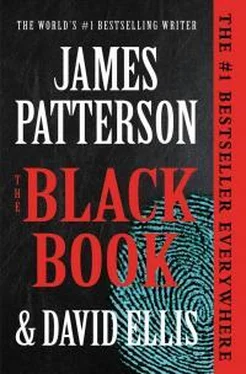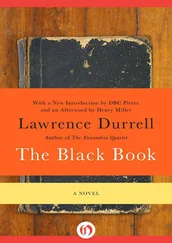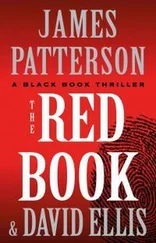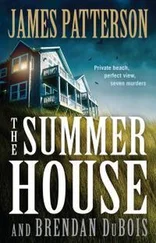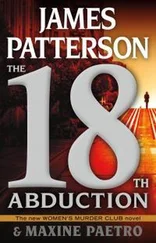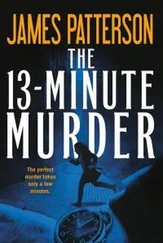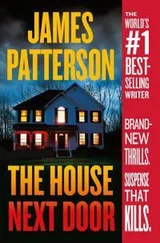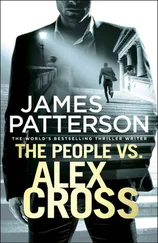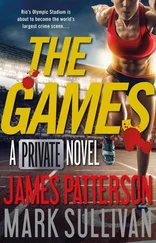I wanted to go home. I wanted to pace around my town house, pour myself a stiff drink, and ponder why in God’s name my sister, Patti, would have been meeting with the manager of a brothel, presumably the guardian of the prized little black book.
But I couldn’t go home. Because I didn’t want my tail to stop following me. If he knew me—and he must have—then he knew where I lived. Once he saw me pull up to my building, he’d assume I was going in for the night. He’d keep his distance. He might even call it a night himself.
And I didn’t want him to call it a night. So I didn’t go home.
From Chicago Avenue, I turned right onto Damen and kept my car at an even speed. Damen probably wasn’t the best choice, because as I drove north, the area became crowded again, with restaurants and bars and some pretty high-end boutiques, too, once you got north of North Avenue. Fifteen years ago, this was the cool place to live, where the artists and hipsters hung out. That crowd was still here, but it had attracted more yuppies and even some families, people who could afford the sky-high property values.
But I didn’t care about the gentrification of Wicker Park or Bucktown at the moment. I was more interested in the sedan three cars behind me, which thus far had made every turn I had made. See, the route I’d taken was unusual. I’d started on Rush Street, going north, then done a loop to head south on State Street to Chicago Avenue, then I drove west to Damen, and now I was heading north again on Damen to Armitage, which was a mile north from where I originally started—my double-parked spot on Rush.
My route, in other words, made no sense. The guy who said that the shortest distance between two points is a straight line? That guy would’ve said I was an idiot. Why go to all that trouble to head south when I could have just kept going north from Tyson’s on Rush Street? I’d gone completely out of my way. Instead of a straight line, my route looked like a hump-backed serpent.
You know what I looked like? I looked like either (1) a tourist who didn’t know his way around Chicago or (2) someone who was trying to be surreptitious about his movements.
And my tail knew I wasn’t a tourist.
But the other benefit was that I could now say the same thing about the guy following me. The only reason for him to take this route was to tail me.
With my right hand on the steering wheel, I used my left to slip my piece out of my side holster, ejecting the magazine to check the clip. I had enough bullets. It usually only takes one.
Not that I planned on using it. I’m a lover, not a fighter. I’m a sweetheart of a guy. Confrontation is never my first choice. But sometimes you can’t avoid it. And a Boy Scout is always prepared.
I turned left off Damen onto Dickens, driving west again. We were in an area that still hadn’t decided if it was going to be upscale residential or semi-industrial. I drove another mile or so before I hung a right. Now I had three blocks of driving ahead of me, straight north on a quiet street, so I could see behind me pretty clearly.
There in the distance, a good city block behind me, the sedan made the same turn.
It was no coincidence. We’d left coincidence in the dust miles ago.
I pulled into an abandoned lot that, once upon a time, was home to a bank with a drive-in wing on the side. Some stray garbage was littered about. No reason—no good reason—for anyone to be here this time of night.
I pulled up next to the drive-through lane and stopped. I wanted to make sure that my tail had a good look at me. I put the car in park but kept it running. I fished through the glove compartment until I found an empty envelope.
The sedan drove past on the road. It slowed a bit as the driver, I assume, was trying to get a look at what I was doing. If he had any kind of a scope and could see into my car, he would probably think I was waiting for somebody.
The sedan drove on. He didn’t have much of a choice. He was too conspicuous, on a side street that wasn’t busy. With me sitting idly in an abandoned parking lot, he couldn’t stay where he was.
I scribbled a note on the envelope, took a photo of it with my phone so I wouldn’t forget the details, and got out of my car.
It was colder than a mother-in-law’s glare out here. The wind, in open space, came at me from all directions. I made a point of looking all around me, as though I were making sure that nobody was watching.
Then I walked over to the slot by the teller’s window and placed the envelope inside it.
I jogged back to my car and got in and drove out of the parking lot, back to the street I’d originally taken, but this time driving in the opposite direction, south.
“Your move,” I said, looking in my rearview mirror.
I drove a normal speed, my eyes glued to the mirror. I was more than two blocks down, almost at Dickens, and the car still hadn’t come out from wherever it was hiding to follow me.
That’s what I figured. He wasn’t going to follow me.
He was going to see what I had dropped in that teller’s slot.
Thirty-Five
I MADE a right onto Dickens, which is the direction my tail would expect me to take if I were going home. I lived about two miles from this spot, to the south and west.
But I wasn’t going home. I turned right on the next street and headed north, back to the abandoned bank, approaching it from the other side.
I picked this location for a reason. Many moons ago, when I first made detective, we caught a pickpocket who was working this neighborhood. We had several complaints in the span of a single week, and it didn’t take Sherlock Holmes to quickly discover that the victims had one thing in common—the last thing they had done before their pockets were picked was withdraw money from the ATM at this bank. Not the drive-through window but the walk-up vestibule, encased in glass and locked in the evenings but open during the day.
The thing was, the thief didn’t just steal the victims’ wallets. He also went immediately to the closest ATM and emptied their bank accounts of the maximum amount the bank would allow for a single withdrawal.
How, I wondered, being the new, eager detective that I was, could the thief figure out the ATM password so quickly? Sure, maybe he had some sophisticated computer software, but this was several years ago, before that sort of thing was as rampant as it is today—and besides, he was using the ATM card within minutes, if not seconds, of the theft.
So I did a wee bit more detective work and realized that one end of the bank’s parking lot was bordered by trees. I decided to kill a bit of time in an unmarked vehicle down the street. It only took three hours until a white male, a teenager fitting the description of the suspect, climbed a tree and trained his binoculars on the ATM vestibule.
Well, I didn’t need to climb a tree tonight. Binoculars wouldn’t have hurt, but I didn’t have any. So I crawled over to the shrubs and kept low. The view of the teller’s slot was nice and clear. It was dark in the vacant lot, but if it was dark for me, it would be dark for him, too. He’d probably need a flashlight, and with any luck the light coming off it would give me enough illumination to see this asshole’s face.
The sedan that followed me here pulled up to the intersection where the bank was located. The guy probably wanted to wait a while to make sure nobody was around, to be confident that I had left for good.
Then the car pulled into the parking lot and drove toward the teller window of the drive-up, just where I’d been. The car’s headlights shone into my face. That wouldn’t help. It would make things harder. But maybe he’d walk past the headlights, which would light him up nicely for me. All I needed to know was who he was, just a quick shot of his face.
Читать дальше
